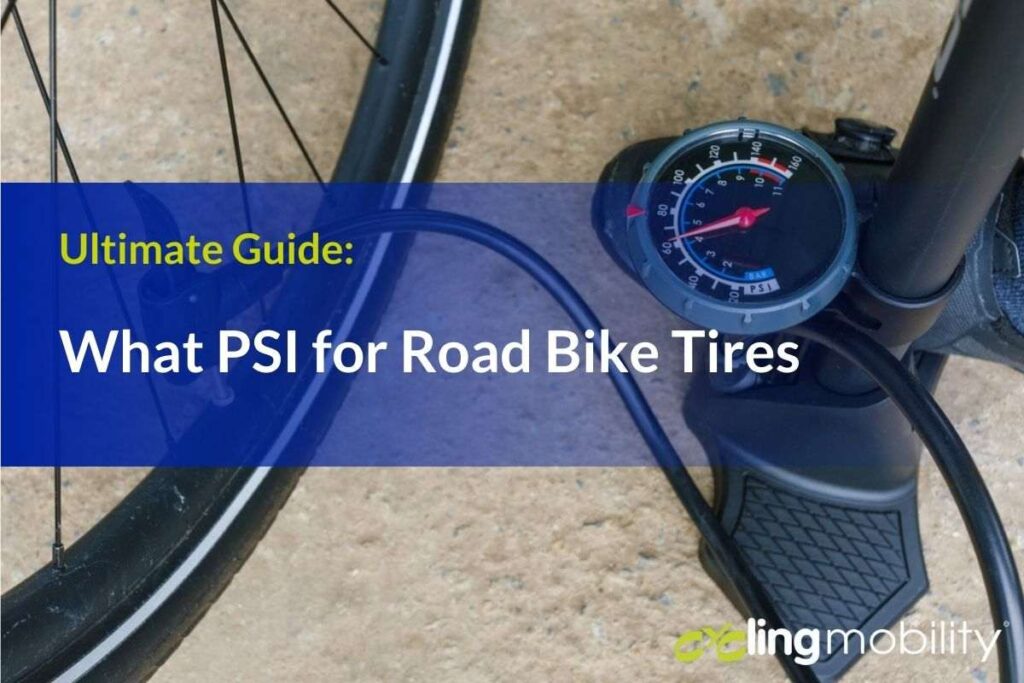Welcome to my expert guide on how to tighten bicycle spokes. It’s a key skill for every cyclist to know for good wheel care. Properly tightened spokes make your ride smooth and protect your wheels for a long time. With the right tools and techniques, you’ll learn to adjust spokes like a pro.
In this guide, I’ll show you how to tighten spokes correctly. Remember, loose spokes can make your wheels untrue. This affects your ride’s stability and safety. So, it’s important to check and adjust your spokes often. Let’s get started and keep your wheels in top shape!
Understanding the Importance of Properly Tensioned Spokes
Keeping spokes at the right tension is key for a bike’s performance and safety. The tension affects how stable the wheel is, which impacts the bike’s ride on different terrains. Even tension prevents wheel misalignment problems.

Impact of Spoke Tension on Wheel Stability
Uneven spoke tension can cause big problems, like wobbly wheels and a bad ride. Spokes that are too loose or too tight can warp the wheel, making it less effective at handling impacts. Balanced tension helps the wheel handle daily stresses better and lasts longer. Regular checks on spoke tension keep my wheels performing well.
Safety Risks Associated with Improperly Tensioned Spokes
Ignoring spoke tension can be very dangerous. A wheel with the wrong spoke tension is more likely to break spokes and damage hubs. These problems can make riding unsafe and unpredictable. Keeping the spokes tight is crucial for my safety and the bike’s performance.
Benefits of Regular Spoke Maintenance
Regular maintenance of spokes improves both performance and safety. It prevents issues caused by wear and tear. Using tools like the Park Tool TM-1 helps me spot problems early, keeping my ride smooth and safe. Proper care reduces the chance of wheel failures, making cycling more enjoyable.

How to Tighten Bicycle Spokes: Step-by-Step Guide
Keeping your bike’s spokes in good shape is key for a smooth ride. Knowing the tools and steps is important. Here’s a guide on tightening spokes on a road bike.
Gather Your Tools
- You’ll need a spoke wrench or any bike spoke tightening tool that fits the nipple size of your spokes.

Prepare the Bike
- Flip your bike upside down or place it on a repair stand to access the rear wheel easily.
Inspect the Spokes
- Slowly spin the wheel and visually inspect each spoke for tightness.
- Look for spokes that are too loose or have uneven tension.
Identify Spokes for Adjustment
- Mark the spokes that need to be tightened based on your inspection.
Adjust the Spokes
- Use your spoke wrench to turn the spoke nipples.
- Turn clockwise to tighten and counterclockwise to loosen.
- Focus on tightening spokes on the side experiencing wobble or dish.
Make Small Adjustments
- Turn the spokes no more than a quarter turn at a time to avoid over-tightening.
- After each adjustment, spin the wheel to check your progress and alignment.
Repeat the Process
- Continue making small adjustments and spinning the wheel until it remains straight and true.
Final Check After Riding
- Recheck the spoke tightness after riding your bike for a short distance as they may loosen or settle.
- Make any final adjustments as needed.
By following these steps, you’ll extend the life of your wheels and improve your cycling performance.
Common Techniques for Tightening Spokes
Tightening bicycle spokes is key to keeping wheels in top shape. Knowing the right methods makes the job easier and more effective. Here, I’ll share some top ways to get the best spoke tension.
Using a Spoke Wrench Effectively
A good spoke wrench is essential for precise adjustments. It lets me hold the nipple tight, preventing slipping. When using it, I place the wrench over the nipple and make sure the spoke is straight.
Turning the wrench clockwise tightens the spoke. Counterclockwise loosens it. I always make small changes, about half turn at a time.

Adjusting Spokes in Small Increments
Small changes in tightening can make a big difference. I check the wheel often as I adjust the spokes. This helps catch any problems early, like uneven tension.
Runouts of a few millimeters are okay if the spokes are tight and the wheel is straight. Being patient and making small, precise changes keeps my wheel true and ready for every ride.
RELATED POST: How to Adjust Road Bike Handlebars for Better Comfort and Control
Common Mistakes to Avoid When Tightening Bicycle Spokes
When maintaining your bike, knowing how to tighten bicycle spokes is an essential skill. However, cyclists often make mistakes that can harm their bike’s performance. Here are the most common errors to avoid and how to keep your wheels in top shape.

1. Uneven Tension on Spokes
One of the most critical mistakes is tightening spokes unevenly. Uneven spoke tension can cause a warped rim or poor wheel alignment, leading to long-term issues. Always check the tension on all spokes and tighten them in tandem with their opposite to maintain balance.
2. Tightening Without a Spoke Wrench
Many cyclists attempt to tighten spokes by hand, which often leads to over-tightening or incorrect tension. Always use a spoke wrench for precise adjustments. It allows for incremental tension control, preventing over-tightening and possible damage to the wheel. Avoid tightening bike spokes without this tool to maintain the correct tension.
3. Skipping Regular Spoke Inspections
Regularly checking your spokes is key to preventing issues. Spokes naturally loosen over time due to riding stress, so develop a habit of checking their condition. Routine inspections allow you to identify any loose or damaged spokes and make timely adjustments before the problem worsens.
4. Neglecting Spoke Material and Age
Older, rusted spokes are more prone to snapping when tightened. Before any adjustments, consider the age and condition of your spokes. Tightening rusted or worn-out spokes can increase the risk of breakage, so inspect their condition carefully to avoid unnecessary damage.
Diagnosing Spoke Tension Problems
When you’re into bicycle maintenance, spotting spoke tension issues is key. Knowing the signs of untrue wheels is essential. A few simple checks can show if your wheels need attention.
Identifying Wobbles or Untrue Wheels
I always check for wobbles in the wheel during my inspections. I spin the wheel and look for uneven gaps between the brake pads and the rim. If I see these gaps, it means the spoke tension might be off.
Catching these problems early helps avoid more damage. It also makes sure your ride is safer.
Checking Spoke Pairs for Tension Discrepancies
Then, I checked the spoke tension. I compare both sides of the wheel. I’ve found that uneven tension can affect stability.
Using a spoke tension meter, I measure the tension across different spokes. This tells me if any spokes are too tight or too loose. It shows if the wheel is misaligned and needs adjustments.

Best Practices for Wheel Truing and Maintenance
Keeping your bicycle wheels in top shape is key for both performance and safety. By following the best practices for wheel truing, you can make your bike last longer and enjoy a better ride. Regular checks and proper spoke care help catch problems early. Here are some key tips for keeping your wheels in great condition.
Utilizing a Truing Stand
A truing stand is a game-changer for wheel truing. It costs between $100 and $600 and makes adjustments super accurate. It helps spot issues with your wheel’s alignment, making fixes easier.
It’s great for checking four important things: how straight the wheel is, its roundness, if it’s properly dished, and if the spokes are tight enough.
Regular Inspections and Adjustments
Regular checks on your bike wheels are a must. They help catch small problems before they get big. When inspecting, I always check the spoke tension.
I use a tool like the Park Tool TM-1 to keep the tension just right. It’s also important to check if the wheel is straight and round. Wheels with uneven spoke tension won’t stay true for long.
Preparing Spokes and Nipples for Longevity
Getting your spokes and nipples ready is crucial for your wheels’ long life. The right spoke key is essential for making adjustments. When tightening spokes, turn the nipple clockwise from the outside.
Applying a bit of lubricant can make it easier to turn stubborn nipples. For bladed spokes, using a spoke holder keeps them from twisting. These steps ensure your wheels are always ready for the road.

Conclusion
Learning to tighten bicycle spokes is crucial for a safe and smooth ride. This guide has shown the importance of keeping spokes in check. It helps prevent problems like twisted rims and improves your ride.
We’ve looked at different ways to tighten spokes and how to spot tension issues. It’s important for all cyclists, whether they ride a standard bike or an eBike. Even with fewer spokes, keeping them tight is key for stability.
Regular maintenance of spokes can make your rides better and last longer. By following the tips from this guide, your wheels will be in top shape. This care will make your rides safer and more enjoyable.
FAQs
How often should I tighten my bicycle spokes?
Check and adjust your spokes every few rides. Also, after hitting a pothole or any big impact on your bike.
What tool do I need to tighten my bike spokes?
You need a spoke wrench that fits your spokes. Make sure it’s the right size to avoid damaging the nipples.
Can I tighten dirt bike spokes without a spoke wrench?
You can try other tools, but a spoke wrench is best. It ensures accuracy and prevents damage to spokes or nipples.
How can I tell if my spokes are too loose?
If your wheels wobble or brake pads show uneven gaps, tighten your spokes.
What are the signs of improperly tensioned spokes?
Look for a wobbly wheel, uneven tire wear, and a rough ride. Fix these problems quickly.
How do I use a spoke wrench correctly?
Place the wrench over the nipple and turn clockwise to tighten. Always check the spoke direction to avoid mistakes.
How can I check if my wheel is true?
Spin the wheel and check for gaps between the rim and brake pads. Any irregularities mean the wheel is untrue and needs adjustment.
Why is a truing stand useful for spoke adjustments?
A truing stand helps align the wheel accurately. It makes it easier to spot any wobbles or misalignments during adjustments.
What happens if I don’t maintain my spoke tension?
Not keeping your spokes tight can make your wheel untrue. This can hurt your ride quality and safety. It might also cause expensive damage or injuries.
Can I do spoke adjustments myself?
Yes, you can! With the right tools and a bit of practice, most cyclists can tighten their spokes well. This helps with wheel maintenance.






